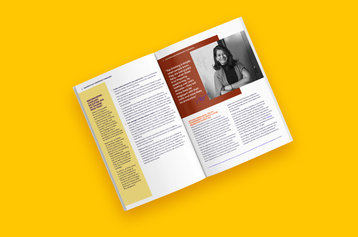
Pay periods are a defined amount of time for which an employee will receive a paycheck. Pay periods determine:
- The frequency and schedule by which employers run their payroll and pay their employees.
- The frequency and number of paychecks received by employees in a month.
- The amount deducted from each paycheck to pay for benefits.
Common payroll periods include:
- Semi-Monthly
- Twice a month on two specific days of the month, e.g. 15th and 30th.
- Employees will have 24 pay periods in a year.
- Bi-Weekly
- Every two weeks on a specific day of the week, e.g. every other Friday.
- Employees will have 26 pay periods in a year.
- Weekly
- Once a week on a specific day of the week, e.g. each Friday.
- Employees will have 52 pay periods in a year.
- Monthly
- Once a month on a specific date, e.g. 30th.
- Employees will have 12 pay periods in a year.
The most common payroll period schedules are semi-monthly, bi-weekly, and weekly. Be sure to check with your state laws because they may require a minimum pay period. It’s also worth noting and communicating what goes into an employee paystub.
What is a Lookback Period?
Taxes. For many small businesses, keeping up with the laws and regulations surrounding taxes – especially employer payroll taxes – is an ongoing challenge. Navigating applicable tax codes can be nearly a full-time job. As you strive to stay current with evolving legislation and payments that need to be made, there’s yet another aspect of tax law that must be considered: the lookback period.
Lookback period is a term you might often hear without knowing the definition. In layman’s terms, lookback periods are lengths of time the IRS can use to assure your previous tax filings have been correct. They apply to different types of filings and can vary in length. Here are a few to consider, based on your status.
Lookback measurement period for payroll taxes
Most small businesses make payroll tax deposits on an annual, monthly or semimonthly basis. The schedule of payment is determined by the volume of payroll.
For employers who file Form 941, paying monthly or semimonthly, the lookback period is a span of 12 months, including four quarters which ended on June 30 of the prior year. For instance, the lookback period for 2018:
Quarter 3: July 1 to September 30, 2016
Quarter 4: October 1 to December 31, 2016
Quarter 1: January 1 to March 31, 2017
Quarter 2: April 1 to June 30, 2017
Very small businesses file Form 944, submitting payroll taxes annually. To be eligible for this, their annual tax liability must be less than $10,000.00. For these filers, the lookback period is the second prior calendar year.
The lookback period for 2018:
Calendar year 2016
The IRS provides more detailed information on filing requirements and lookback periods with IRS Notice 931.
How many years can the IRS go back for an audit?
In most instances, the IRS can go back three years to audit a business and assure taxes were made properly. The statute of limitations begins three years prior to the date the tax was due.
In some instances, though, the IRS can double that amount. The statute of limitations for what they term substantial understatement of income, or failure to report more than 25% of gross income, increases to six years. Failure to report foreign income in excess of $5,000.00 or more will also double the audit timespan to six years.
For businesses that never file a return, or those that file returns the IRS can prove include civil or criminal fraud, there is no statute of limitations – the lookback period is limitless.
What about tax exempt organizations?
Most people understand that charities, non-profits, churches and other organizations are tax-exempt.. But what defines tax-exemption under the IRS Code? The two most common types of tax-exempt organizations are 501(c)3 and 501(c)4.
What is a 501(c)3?
These organizations operate for educational, scientific, religious or other charitable purposes. They do not provide any net income to the owner or founder of the organization. They should not be involved with political campaigns nor violate public policy.
What is a 501(c)4?
These social welfare organizations include associations that promote community activities, or assist with public services. They can include free local newspapers or historical societies that work to preserve their community’s heritage.
For new organizations, the process to become tax-exempt is lengthy and complex. It begins with the entity’s articles of incorporation and bylaws. These must be filed along with IRS Form 1023, Application for Recognition of Exemption Under Section 501(c)(3) of the Internal Revenue Code. Smaller non-profits can file Form 1023 E-Z. The IRS will examine the documentation and assign the classification if appropriate.
What is the lookback period for tax-exempt status?
To verify classification as a tax-exempt organization, the IRS lookback begins five years before an excess benefit transaction has occurred. They define an excess benefit transaction as any in which a tax exempt organization has provided a disqualified person (board member, contributor, employee, vendor) any benefit worth more than the value of the services they provide. Once the transaction has triggered an audit, the lookback period is five years from the date of the transaction.
Compliance and Lookback Periods
Of course, all business should strive to file taxes in a timely and accurate fashion. But to be successful in the event of an audit, it’s a best practice to maintain records for at least six years. If there is an audit, and you don’t have the data substantiating your claim, the IRS will use the only available data to make a determination. This could mean back-taxes and penalties. It’s critically important to maintain paperwork that supports any filing.






